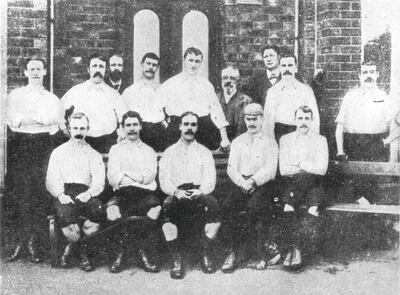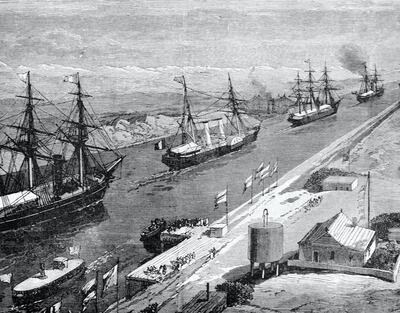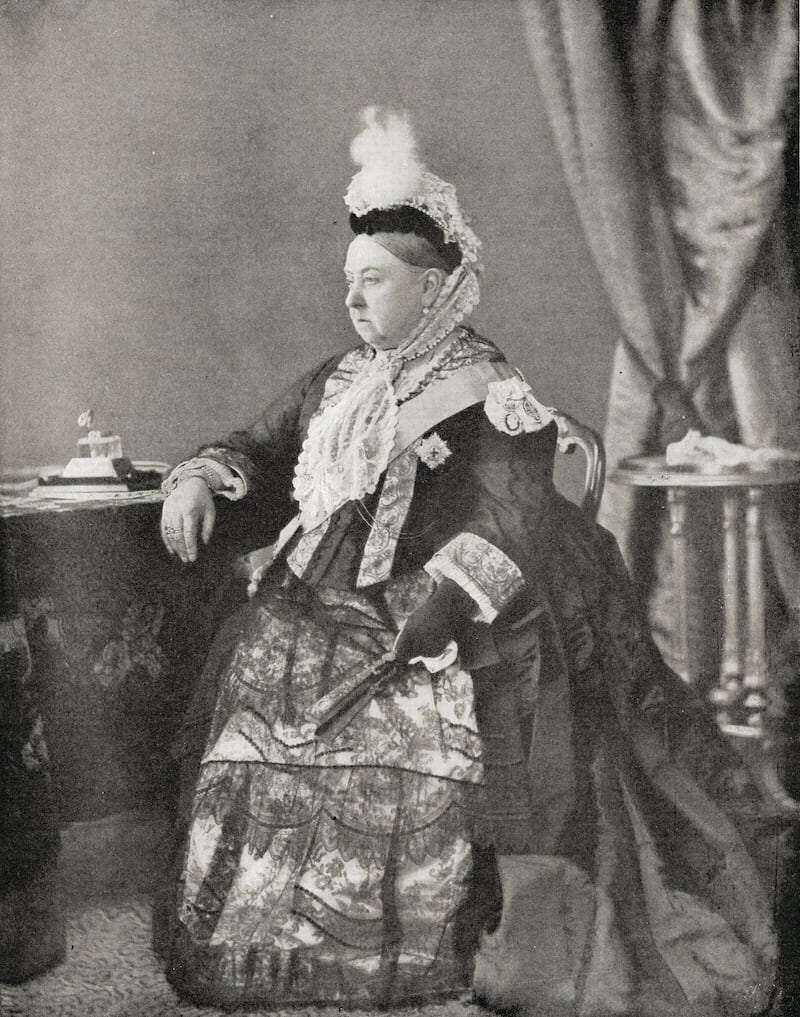The Islamic calendar takes as its starting point the Hijri, or the journey of the Prophet Mohammed and his followers from Makkah to Madinah, and consists of 12 lunar months in a year of either 354 or 355 days.
As a result, it moves 11 days each year in relation to the Gregorian calendar. It takes 33 years for the Islamic calendar to return to the same seasonal point as the Gregorian calendar.
Over four weeks, we are looking at the world as it was on previous years when Ramadan was in May. It is a journey that takes us from the self-driving car to the horse and carriage, from the age of the internet to the age of empires.
This week we look at Ramadan 1305, from May 12 until June 10, 1888.
Empires dominated the lives of much of the world in 1888. It was the Victorian era, named after its most prominent figure, the Queen Empress Victoria, now an old woman, whose territories encompassed one quarter of the globe on which it was said the sun never set.
France also pursued imperial ambitions, as did many of the great European nations.
The rising power was the US while to the East, the Ottomans, although in decline, controlled large areas of the Middle East, from the lands now called Iraq and Syria to the edge of modern Saudi Arabia.
What is now the UAE was largely tribal, with affairs governed by a series of treaties with the British.
“The town of Abu-Dhabbi is smaller and less flourishing than the neighbouring ports of Debaye and Shargah,” the British political agent for the Gulf wrote in his annual report for 1888.
“But the Chief, Shaikh Za’eed-bin-Khaleefah, the head of the numerous Beniyas tribe, is the most important personage in Western ‘Oman.”
It is not just the phonetic spellings that are unfamiliar from this snapshot from over 130 years ago, The sheikh is Zayed I, also known as The Great, the grandfather of the first President of the UAE who carried his name. Sheikh Zayed I ruled Abu Dhabi from 1855 until his death in 1909.
In those days, the tip of the Arabian Peninsula that included what is now the UAE and Oman was often called just Oman, Trucial Oman, or the Trucial States, a reference to several treaties imposed during the 19th century.
They required Rulers to deal exclusively with Britain in exchange for protection against other countries.
The country we today call Oman was in 1888 divided between the interior and the coast, which was ruled by the Sultan of Muscat and Oman.
On June 4, near the end of Ramadan, Sultan Turki bin Said died, and was succeeded by his second son, Faisal, from whom the current Ruler, Sultan Qaboos, is directly descended.
One obvious sign of the decline of the Ottoman Empire, was the loss, in 1882 of Egypt as a protectorate to the British. Egypt’s great prize was the Suez Canal, opened in 1869, initially under French control.
London and Paris quarrelled over who had the rights to determine navigation along the waterway, and in October 1888 the Convention of Constantinople guaranteed passage of all ships in times in time of both peace and war.
These were still often dangerous times for travellers. In November, the Bombay steamship Vaitarna, disappeared without trace during a cyclone in the Arabia Sea. At least 740 lives were lost, including 13 wedding parties and its captain Haji Kasam, a wealthy aristocrat.
The loss of the Vaitarna, popularly known as the Vijli, is still recalled in songs and stories in Gujarat, where the ship was believed lost, and with reports today that the tragedy will be made into a Bollywood film called Vijli: Mystery of the Phantom Ship.
There was a narrow escape for Tsar Alexander III the previous month, when the Imperial train derailed at speed in Ukraine. Twenty-one lives were lost, but the Tsar and his family survived, with reports that the Russian ruler held up the shattered roof of their carriage as they escaped.

Disasters often took a heavy toll at that time. Blizzards sweeping the US in January and March took the lives of nearly 700 people, while fire devastated the Swedish town of Umea in June.
The year was also one of emerging technology, sometimes in unexpected places. In Germany, a young inventor called Karl Benz despaired that the world would ever take his new invention seriously.
To prove the detractors wrong, his wife Bertha packed up her two sons and set off on a 106-kilometre ride to visit her mother, using his Model III Benz. She arrived in triumph on August 5, having made the first long distance automobile trip.
Rival inventors were racing to make the first moving pictures. The winner was French: Louis Le Prince, whose Roundhay Garden Scene, was filmed in Leeds, England, and released on October 14, lasts exactly two seconds.
Le Prince would never profit from his triumph. He vanished without trace on train journey home in 1890 and was never seen again.
The big winner was George Eastman, patenting the camera to use roll film on September 4 and trademarking the name of his company Kodak.
In Britain, the Victorian love of organising everything saw the creation of a new institution. Representatives of a dozen football clubs gathered in Manchester in April to create a new competition called the Football League.
Now the oldest football league in the world, the first matches were held in September. Clubs included Wolverhampton Wanders, Aston Villa, Everton and Bolton Wanderers, but it was Preston North End who became the first league champions, unbeaten for the season and earning the nickname “The Invincibles”.
There was no place for tennis or football matches in the slums of East London. Life there was nasty, brutish and short, so it there was little surprise and little attention was paid when the mutilated body of prostitute Mary Ann Nichols, 43, was found in a Whitechapel back street on August 31.
Just over a week later, a second murdered prostitute, Annie Chapman, was discovered in the same area. On September 30, Elizabeth Stride and Catherine Eddowes were found.

Three days earlier, a London news agency received a letter claiming responsibility for the killings. It was signed “Jack the Ripper.”
As vigilantes patrolled the streets, police discovered another mutilated woman, Mary Jane Kelly in Spitalfields. By now London was in a state of panic and the case becoming one of the most notorious serial killings in history.
A final victim, Frances Coles, 25, was found in February 1891, with possibly four other murders linked to the spree.
Jack the Ripper was never caught and the case remains unsolved to this day, with suspects ranging from a lawyer and school teacher to the painter Walter Sickert.
Those murdered women are among the best known deaths of 1888. Others included Louisa May Alcott, the author of Little Women, the English poet Matthew Arnold, Edward Lear, famous for the poems known as limericks, and Carl Zeiss, whose name is still a byword for precision optics.
Births that year include the man whose exploits in the Arab Revolt would give him the name Lawrence of Arabia, the poet TS Eliot, the French singer Maurice Chevalier, and the composer Irving Berlin.
1888 is notable for one other unusual reason. The year that is simply 1305 in the Islamic calendar, boasts the longest day ever on August 28, when rendered in Roman numbers.
With 13 letters, MDCCCLXXXVIII, it is a record that will last until 2888.







